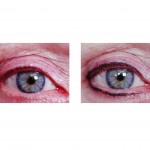
Permanent makeup, medically known as micropigmentation, is the precise placement of color into the skin. Through small needles, differing colors of iron oxide pigments are placed into the deeper portion of the skin, known as the dermis. Precise placement of needle sticks creates many tunnels into the skin which then carry the colored pigments along with each needle stick. Once the tiny pinholes heal over, the pigments are forever trapped in the deeper layers of the skin, creating a permanent color effect. The size of the pigment particles prevents the body from being able to remove them from their embedded site. Because some of the embedded tattoo particles may be smaller, there is always some fading of portions of permanent makeup over time which is why occasional touchups may be needed.
When considering undergoing permanent makeup, I recommend that each potential patient be aware of the following concepts surrounding it. First and foremost, as the term implies, permanent makeup is……permanent. There is no good way to remove the color once it has been placed. Lasers can not remove them and may actually make them appear worse. The decision to have permanent makeup should be well thought out in advance. As a result, you should undergo a thorough pre-treatment assessment of color selection and exact location of color placement. Meeting with a professionally trained and licensed aesthetician in a medical setting who has specific training and certification is usually best, although technicians from many different backgrounds perform the procedures. They will perform a thorough pre-treatment consult using removeable liners with the proper color to ensure you are comfortable with the look. The procedure will not be done the same day as you need time to think about the selections of color and placement. As the use of many needlesticks from tattooing is uncomfortable, I always provide some sedative medication for the procedure and I personally inject local anesthetics to minimize every patient’s level of discomfort. Be aware that the initial placement of the tatto color is designed to be a little too dark as they will be some mild fading over the next few months. For this reason, some touch-up of the permanent makeup work is almost always necessary in the first six months after the initial application.
Permanent makeup can be ideal for many reasons beyond the inconvenience of those who detest a daily cosmetic application. Physical reasons such as age, decreased vision, and mental impairment may make permanent makeup a ‘medical need’ that the patient otherwise would not be able to do. Very active lifestyles that involve strenuous activities and frequent exposure to water make permanent makeup a near necessity for some patents.
Dr. Barry Eppley
Indianapolis, Indiana


